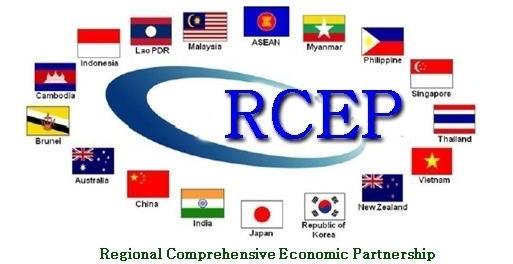Economic globalization and free trade are historical trends that are in line with the development interests of all countries. Maintaining multilateralism and persisting in open cooperation are the correct choices to deal with risks and challenges and promote common development.
On November 15, the Regional Comprehensive Economic Partnership Agreement (RCEP) was officially signed. As the free trade zone with the largest population, the most diverse membership structure, and the greatest development potential in the world, this is not only a landmark achievement of East Asian regional cooperation, but also a victory for multilateralism and free trade. RCEP will achieve a high level of openness in goods trade, service trade and investment between countries in the region, greatly enhance the level of regional trade and investment liberalization and facilitation, and enhance regional attractiveness and competitiveness. It will not only strongly promote the overall recovery of the regional economy, but also Promoting regional development and prosperity and adding new momentum will also become an important engine for global growth.
Grinding a sword for eight years proves the wisdom and strength to walk toward each other. RCEP was initiated by ASEAN in 2012 to reduce tariff and non-tariff barriers and establish a unified market. After 31 rounds of formal negotiations, we have overcome difficulties. Especially since this year, the members of RCEP have overcome the huge difficulties caused by the new crown pneumonia epidemic, fully completed the market access negotiations, and completed the review of more than 14,000 pages of legal documents. The agreement was finally signed as scheduled. This is the most important achievement in the construction of East Asian economic integration in the past 20 years, and it has not come easily.
In the RCEP negotiations, China’s sincerity to promote open cooperation has attracted much attention. Upholding the principles of openness, inclusiveness, and mutually beneficial cooperation, China has participated in all leaders’ meetings, ministerial meetings and technical negotiations, and has promoted the resolution of difficult issues in negotiations in the spirit of “promoting talks, promoting cooperation, and facilitating.” The formal implementation of the Foreign Investment Law and the continuous reduction of the negative list of foreign investment access have created a good atmosphere for China to participate in relevant negotiations, and provided rich experience and institutional guarantees. China is accelerating the construction of a new development pattern with the domestic cycle as the main body and the domestic and international dual cycles mutually promoting each other. This is not only China’s own development needs, but also will better benefit the people of all countries and demonstrate the responsibility of a major country.
The signing of RCEP will stimulate the vitality of regional cooperation. RCEP is conducive to promoting the formation of a unified regional rule system, eliminating trade and investment barriers, and greatly improving the degree of trade and investment liberalization and facilitation. In the context of a sharp decline in international trade and investment caused by the new crown pneumonia epidemic and a severe recession in the world economy, RCEP will greatly stimulate the vitality of goods, technology, services, personnel and capital flows, which will help maintain the stability and smoothness of the regional industrial chain supply chain and help. All members work together to overcome the challenges brought by the epidemic. Singapore’s Lianhe Zaobao pointed out that the signing of RCEP will inject strong impetus into regional economic cooperation. The British “Financial Times” believes that RCEP will contribute approximately US$118.6 billion in increments to the global economy, helping each member’s economy increase by 0.2%.
The signing of RCEP sets a benchmark for open cooperation worldwide. RCEP is a comprehensive, modern, high-quality and reciprocal free trade agreement, showing a strong tolerance and taking care of the tolerance of its members in opening up. The 15 countries that signed the agreement include the ten ASEAN countries and China, South Korea, Japan, Australia, and New Zealand. There are developed countries, developing countries, and least developed countries. Some countries have been given some transitional arrangements to fully reflect the development of the participating parties. The greatest common divisor of the appeal has set a good example for the establishment of mutually beneficial and win-win free trade arrangements between countries at different development stages and different systems. The signing of the agreement fully demonstrates that multilateralism and free trade are the road and the right way, and still represent the correct direction of the world economy and humanity. The international community generally believes that RCEP will play an active role in promoting global free trade and the development of the multilateral trading system. Singapore’s Prime Minister Lee Hsien Loong stated that this is a major step taken by the world, marking a collective commitment to maintain an open and interconnected supply chain and promote freer and closer interdependence.
Although the road is far away, the action will come; though it is difficult, the action will be accomplished. Economic globalization and free trade are historical trends that conform to the development interests of all countries. Maintaining multilateralism and adhering to open cooperation are the correct choices for coping with risks and challenges and promoting common development. The beliefs of openness, cooperation, unity, and win-win are worthy of adherence to, and bilateral, multilateral and regional cooperation should move forward. As long as all parties have firm confidence and work together, they will be able to create a better future for East Asia and even mankind.



